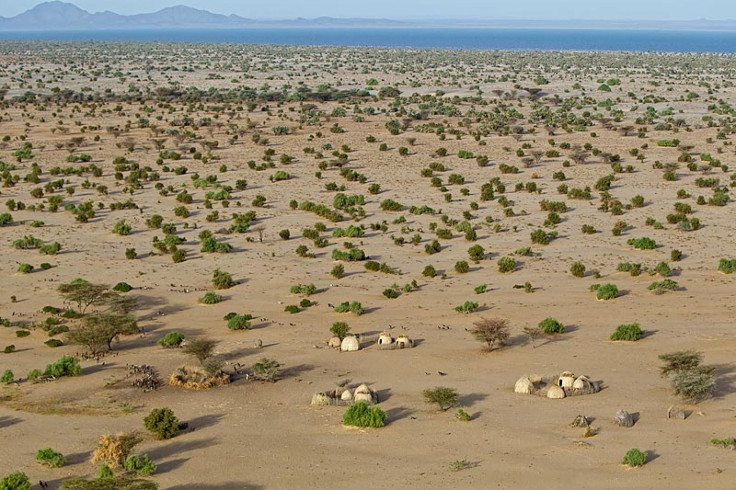Watershed Moment For Kenya? Newly Discovered Reservoir Brings Hope To Drought-Prone Turkana Region

Massive underground water reservoirs have been discovered in a region of Kenya where people have been dying of thirst for years. The Kenyan government and Unesco announced the findings on Wednesday. The reserves include two huge aquifers discovered from space by Radar Technologies International, or RFI, a French natural resources firm, in the northern province of Turkana, one of the poorest and driest parts of Kenya.
"This new wealth of water could boost Kenya's share of available water by 17 percent and alone represents nearly double the amount of water that Kenyans consume today," said a statement from RFI. "This groundwater raises the prospect for improving the livelihoods of the Turkana people, most of whom live in poverty and have limited access to basic services and clean water."
The reservoirs, most of which lie beneath lands near the semi-arid Turkana region in northeast Kenya, are estimated to contain more than 250 billion cubic meters of water and can replenish themselves to sustain withdrawals of 3.4 billion cubic meters annually. That's more water than New York City uses in three years.
"Two aquifers – the Lotikipi Basin Aquifer and the Lodwar Basin Aquifer – were identified using advanced satellite exploration technology. Their existence was then confirmed by drilling conducted recently by Unesco, but there is need for further studies to adequately quantify the reserves and to assess the quality of the water," said a statement from Unesco.
Aside from the two plentiful aquifers deep underground, RTI found about 2 billion cubic meters of water just meters beneath the ground, in easy reach for farmers in the Turkana region.
Kenya is known as a country of fast economic growth, centered around its bustling capital city of Nairobi and the thriving port city of Mombasa. The World Bank predicts that the country's GDP will expand by 5.7 percent this year, up from 4.6 percent last year. But the country also suffers from a large wealth gap, with at least 40 percent of the country's 44 million people living below the poverty line and more than one-third of the population without access to clean, safe drinking water. The rural areas have it worst, especially in northern regions like Turkana, where nomadic herders who rely heavily on predictable weather for their livelihoods were hit by a devastating drought last year.
Nairobi has been working to address these droughts using irrigation systems, and the Ministry of Agriculture reports that the number of smallholder farmers using irrigation has risen from 400,000 in 2010 to more than 700,000 today. The government recently set aside $170 million to irrigate about million acres of land in the northeast: 500,000 acres to grow cereals, 300,000 for sugar cane and 200,000 for horticulture. But these intrusive, capital-intensive initiatives are risky since they have not always been shown to yield greater returns than traditional pastoralism.
The new discoveries are expected to be a boon to Kenya's Turkana region, enabling residents to take advantage to resources in their own backyard.
“The news about these water reserves comes at a time when reliable water supplies are highly needed," said Judi Wakhungu, Kenya's cabinet secretary of the Ministry of Environment, Water and Natural Resources. "This newly found wealth of water opens a door to a more prosperous future for the people of Turkana and the nation as a whole. We must now work to further explore these resources responsibly and safeguard them for future generations."
Kenya has been susceptible to periodic droughts, particularly in the Turkana region, causing massive starvation, deaths and malnourishment.
Alain Gachet, president and CEO of RTI, told The Verge, a U.S. technology news service, that the discovery of water could dramatically change the local economy by creating a new agriculture industry and improve resident’s lives. "This is literally a jump from the Neolithic to the modern age," Gachet said. "They want to be able to fertilize and grow their own food --- to stop the survival economy and move to something more sustainable."
© Copyright IBTimes 2024. All rights reserved.





















